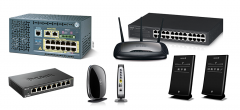Hardware requirements for servers vary, depending on the server application. Absolute CPU speed is not usually as critical to a server as it is to a desktop machine. Servers' duties to provide service to many users over a network lead to different requirements like fast network connections and high I/O throughput. Since servers are usually accessed over a network they may run in headless mode without a monitor or input device. Processes which are not needed for the server's function are not used. Many servers do not have agraphical user interface (GUI) as it is unnecessary and consumes resources that could be allocated elsewhere. Similarly, audio and USB interfaces may be omitted.
Servers often run for long periods without interruption and availability must often be very high, making hardware reliability and durability extremely important. Although servers can be built from commodity computer parts, mission-critical servers use specialized hardware with low failure rates in order to maximize uptime. For example, servers may incorporate faster, higher-capacity hard drives, larger computer fans or water cooling to help remove heat, and uninterruptible power supplies that ensure the servers continue to function in the event of a power failure. These components offer higher performance and reliability at a correspondingly higher price. Hardware redundancy—installing more than one instance of modules such as power supplies and hard disks arranged so that if one fails another is automatically available—is widely used. ECC memory devices which detect and correct errors are used; non-ECC memory can cause data corruption.
Servers are often rack-mounted and situated in server rooms for convenience and to restrict physical access for security.
Many servers take a long time for the hardware to start up and load the operating system. Servers often do extensive preboot memory testing and verification and startup of remote management services. The hard drive controllers then start up banks of drives sequentially, rather than all at once, so as not to overload the power supply with startup surges, and afterwards they initiate RAID system prechecks for correct operation of redundancy. It is not uncommon for a machine to take several minutes to start up, but it may not need restarting for months or years.
At Shrih Technologies we are specialists in Servers Technology as we have a complete knowledge of the Products so we can guide you which product is best for your Business and need wether it is a HP or a IBM, a Dell Server or a Sun Server, we can guide you what is the best server for you.










